Mon 22 Feb 2021
Just thinking: What if there were no hypothetical questions?
Mon 22 Feb 2021
Just thinking: What if there were no hypothetical questions?
Mon 22 Feb 2021
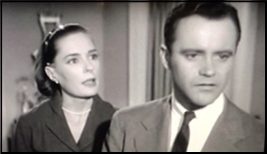
GOODYEAR THEATER. “The Victim.†06 Jan 1958 (Season 1, Episode 8). Jack Lemmon, Doe Avedon, Lana Wood, Ross Elliott, John Eldredge, John Gallaudet. Writer: Marc Brandel. Director: Robert Florey. Currently available on YouTube here.
A minor, moody semi-crime thriller. A man who has recently lost his wife is on the verge of losing his daughter as well, leaving her in the custody of his sister while struggling to find meaning in life once again. He keeps making promises to her but can’t follow though, and when she asks when she can come back home so they can live together, all he can summon up are the vaguest of promises.
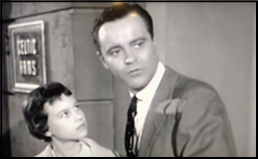
But then he finds himself being followed by two men, no matter where he goes. He has no idea why, and there’s nothing to take to the police. The mystery does give him some purpose in living, though, and although the plot gets really creaky at the end, all ends well.
Jack Lemmon, one of my favorite actors, plays the “everyman†almost perfectly, as he did throughout his career. Lana Wood was only twelve at time this was filmed, and unfortunately has little to do – nothing to indicate that she had a long career on TV and the movies ahead of her. The rest of cast are old pros in the business, and it shows.
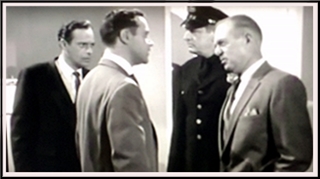
Sun 21 Feb 2021
CLIFFORD KNIGHT – The Affair of the Black Sombrero. Professor Huntoon Rogers #5. Dodd Mead, hardcover, 1939. No paperback edition.

Clifford Knight bad several abilities as an author of detective stories. His writing style, though not exactly scintillating, was several cuts above the average for the 1930s. He had a genuine sense of place and an occasional gift of vivid description. Yet, despite these abilities, Knight was on the whole only a fair writer. He could be fairly good, as with The Affair of the Scarlet Crab and The Affair of the Heavenly Voice; or fairly bad, as with The Affair of the Fainting Butler.
The Affair of the Black Sombrero is simply, well, fair. The major character is a bright young thing named Elsa Chatfield, whom Knight clearly wants us to admire. She represents, Knight tells us, “something eternal in the spirit of American youth.†If that’s true, I’m glad I’m not young any more, for Elsa is utterly insensitive and given to minor cruelties (which Knight probably considers high spirits).
The detective, an English professor named Huntoon Rogers whose connection with university life seems tenuous at best, is interested in the mysterious death of Elsa’s Aunt Kitty a year earlier. But little happens in the first hundred pages of the book except to describe Elsa’s career as a commercial artist. The pace picks up when Rogers is invited to join Elsa’s family on a sailfishing trip to Mexico. The Mexican scenes are well-done, and the description of the fishing itself – resulting in the horrifying death of one of the main characters – is effective. Two more murders occur before Rogers rather haphazardly tosses off the solution, based in part on information never given to the reader.
The Affair of the Black Sombrero indicates why Knight’s books never quite became memorable. He lacked a sense of pace, and his characters never became alive. Although most characters in 1930s detective novels are cardboard, a good writer could trim his cardboard into distinctive shapes. But all of Knight’s paper dolls remain alike. On the other hand he always included enough good scenes and, off and on, enough mystery to make his books mildly entertaining. It’s too bad that he didn’t do more.
The Huntoon Rogers series —
The Affair of the Scarlet Crab. Dodd 1937
The Affair of the Heavenly Voice. Dodd 1937
The Affair at Palm Springs. Dodd 1938
The Affair of the Ginger Lei. Dodd 1938
The Affair of the Black Sombrero. Dodd 1939
The Affair on the Painted Desert. Dodd 1939
The Affair in Death Valley. Dodd 1940
The Affair of the Circus Queen. Dodd 1940
The Affair of the Crimson Gull. Dodd 1941
The Affair of the Skiing Clown. Dodd 1941
The Affair of the Limping Sailor. Dodd 1942
The Affair of the Splintered Heart. Dodd 1942
The Affair of the Fainting Butler. Dodd 1943
The Affair of the Jade Monkey. Dodd 1943
The Affair of the Dead Stranger. Dodd 1944
The Affair of the Corpse Escort. McKay 1946
The Affair of the Golden Buzzard. McKay 1946
The Affair of the Sixth Button. McKay 1947
NOTE: Updated to correctly list Scarlet Crab as the first in the series. (See comments.)
Sat 20 Feb 2021

DO NO HARM. “Pilot.†NBC, 31 January 2013. Steven Pasquale as Dr. Jason Cole (chief of neurosurgery at Independence Memorial Hospital) and as Ian Price, his alternate personality; Alana de la Garza as Dr. Lena Solis, a neurologist at IMH and Dr. Cole’s love interest; Ruta Gedmintas as Olivia Flynn, Dr. Cole’s estranged former fiancé; Phylicia Rashad, as Dr. Vanessa Young, chief of surgery at IMH; Lin-Manuel Miranda as Dr. Ruben Marcado, a clinical pharmacologist at IMH and Dr. Cole’s friend. Directed by Michael Mayer. Can be purchased for streaming at Vudu. This first episode can be seen on YouTube here.
Thanks once again to Wikipedia for providing not only the list of cast members, but who they are on this short-lived series. And by short-lived, I mean it. It lasted for all of two episodes before being yanked from NBC’s 2012-2013 mid-season schedule. (The remaining eleven episodes were burned off later that summer when no one’s watching anyway.)

But, hey, this the pilot episode is not all that bad. It’s good enough to see why it was picked up as a series in the first place. It was obviously way ahead of its time. (An excuse you’ve probably heard before, I’m sure, and in this case it may even be true.)
What it is, as you may have deduced from the credits above, if you looked closely enough, is yet another takeoff of Strange Case of Dr Jekyll and Mr Hyde, variations of which will run from now to eternity, each one with a new creative twist. In this case the focus is on a Dr. Jason Cole, an extremely talented neurosurgeon who has a problem. At night, every night, he shares his body with his evil side, who takes over for exactly twelve hours.

He’s been controlling the damage his other half can do, but the medication is starting to lose its effectiveness, and his alternate personality is starting to cause all kinds of problems, including the would-be new woman in his life, Dr. Lena Solis. She may, in fact, never speak to him again, while on another front his career is starting to hang by a thread.
Well, what do you think? Is this the basis for a long-running TV series or not? It’s well-directed, and the acting, dialogue and photography are all fine. It must be the premise. From what I’ve told you, and from watching the trailer, can you be the judge? (I’m assuming that nobody reading this has ever seen the show, since by all accounts, no one did.)

Sat 20 Feb 2021
MANLY [WADE] WELLMAN – Find My Killer. Farrar Straus, hardcover, 1948. Signet #1448, paperback, 1957.
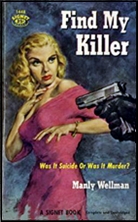
A perfectly acceptable thick-ear mystery for fans of that sort of thing, and I’m one.
Ex-cop, former MP Stonewall Jackson Yates comes to Storm City on the promise of a job and finds his prospective employer dead — an apparent suicide, and if you believe that, I have a stack of rare Harlequin Romances to sell you. He is quickly hired by attorney J. D. (“That’s all the name I’ve got. Dad wanted a boy.â€) Thatcher to throw a sleazy PI out of her office and the two team up to find out who murdered her client and his almost-boss. It seems there’s a codicil in his will offering Five Gees to anyone who can find his killer if he meets a violent end.
Nothing that follows is especially surprising, but Wellman never lets it go stale. There’s the lovely-but-lethal widow —Check; The crooked lawyer —Check; mysterious doctor —Check; brutal cops —Check; false clues, fisticuffs, tentative romance, gangsters and guns — Check, check and CHECK.
Wellman covers all the bases, adds a tricky plot, and wraps it up with a wink. There must be a hundred more like Find My Killer, but if you miss the sort of fast-moving fiction that used to sell for two bits in drugstores, you could do a lot worse than to spend a couple hours here.
Sat 20 Feb 2021
Brenda Lee was only 15 when this song was recorded and released, in 1960. It reached Number One on the Billboard singles chart in July of that year:
Fri 19 Feb 2021
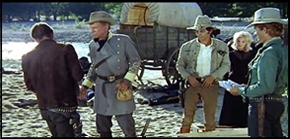
THE HELLBINDERS. Embassy Pictures, US, 1967. Originally released in Italy as I crudeli (“The Cruel Ones”). Joseph Cotten, Norma Bengell, Julián Mateos, Gino Pernice, Ãngel Aranda, Claudio Gora, MarÃa MartÃn. Director: Sergio Corbucci.
In some ways, The Hellbenders is a typical Spaghetti western. There’s an antihero, loads of action, violence, betrayal, and vengeance. In other ways, however, there’s something unique about this Sergio Corbucci directed feature. Even if the film doesn’t wear its politics on its sleeve, there is undoubtedly an ideology embedded in the feature that makes it a more compelling watch than it deserves to be.
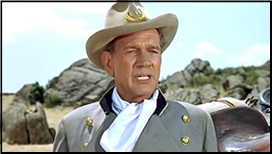
Namely, that the world is a cruel and brutish place where exploitation and violence are more common than not. Although somewhat nihilistic in its approach, the movie does leave open the promise for a brighter future. Another aspect that makes this particular Italian western different is that the leading actor in question here is not a somewhat youthful actor like Clint Eastwood or Mark Damon; rather, it’s Joseph Cotton during the latter part of his career.
Cotton portrays Colonel Jonas, a Confederate officer embittered by his side’s devastating loss in the Civil War. Determined that the South shall rise again, he enlists his three sons in a scheme to steal Union cash which he plans to use to finance a new war effort.
The problem is that his plan depends on having a woman involved in the operation. That’s when he has his son Ben (Julián Mateos – who incidentally looks quite a bit like James Stacy) cajole a saloon girl into playing the part of an officer’s widow to fool the Union Army troops in the area. You see, they will be transporting the loot in a coffin, nominally belonging to her supposed late husband.
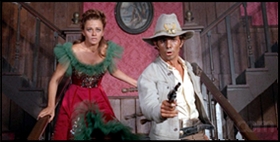
Various twists and turns ensue. Jonas and his boys are put through the ringer. They face off with Mexican bandits, the US Calvary, and Indians. But the final showdown isn’t solely between these Confederate diehards; it’s also between the men themselves.
Lincoln said something about how a nation divided against itself cannot stand. Apparently, so too with a family. And in the final moments of the film, the absurdity and futility of the entire quest is laid bare for all to see.
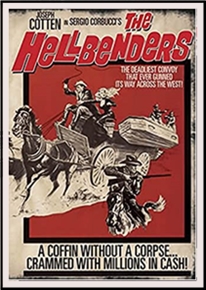
Thu 18 Feb 2021
G. D. H. and MARGARET COLE – Knife in the Dark. Collins, UK, hardcover, 1941. Macmillan, US, hardcover, 1942.
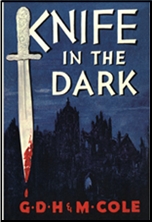
G. D. H. and Margaret Cole were extremely prolific writers between the two world wars: individually and collaboratively, they published well over two hundred books of fiction, nonfiction, and verse. G. D. H. was a prominent social and economic historian; his five-volume A History of Social Thought is considered a landmark work. Dame Margaret is best known for her biographies of Beatrice Webb and of her husband (The Life of G. D. H. Cole, 1971).
The Coles co-authored more than thirty “Golden Age” detective novels, beginning with The Brooklyn Murders in 1923, and six volumes of criminous short stories. Knife in the Dark is their next to last novel, and the only one to feature Mrs. Warrender as its protagonist. “A naturally trim and tidy old lady,” Mrs. Warrender is the mother of private detective James Warrender (who affectionately calls her, among other things, “an incurably meddling old woman”). She is also solidly in the tradition of such “little old lady” sleuths as. Miss Jane Marple and Hildegarde Withers, although less colorful than either of those two indefatigable crook-catchers.
Knife in the Dark takes place at a mythical ancient English university, Stamford, during the dark days of World War II. Kitty Lake – wife of Gordon Lake, a teacher of Inorganic Chemistry whose mother is a cousin of Mrs. Warrender’s – is stabbed to death during an undergraduate dance which she herself arranged. Any number of people had a motive to do away with the mercurial Kitty, who had both a mean streak and a passion for other men; the suspects include her husband, an RAF officer, a young anthropologist, a strange Polish refugee named Madame Zyboski (who may or may not be a Nazi spy), and a dean’s wife whom James Warrender describes as “an awful old party with a face like a diseased horse and a mind like a sewer.”
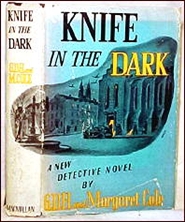
Like all of the Coles’ mysteries, this is very leisurely paced; Kitty Lake’s murder, the only one in the book, does not take place until page 104, and there is almost no action before or after. Coincidence plays almost as much of a role in the solution as does detection by Mrs. Warrender (who happens to be staying with the Lakes at the time of the murder); and the identity of the culprit comes as no particular surprise.
For all of that, however, Knife in the Dark is not a bad novel. The characters are mostly interesting, the university selling is well-realized, and the narrative is spiced with some nice touches of dry wit. Undemanding fans of the Golden Age mystery should find it diverting.
Mrs. Warrender’s talents are also showcased in four novelettes collected as Mrs. Warrender’s Profession (1939). The best of the four is “The Toys of Death,” in which Mrs. W. solves a baffling murder on the south coast of England.
The Coles also created three other series detectives, none of whom is as interesting an individual as Mrs. Warrender. The most notable of the trio is Superintendent Henry Wilson of Scotland Yard, for he is featured in sixteen novels, among them The Berkshire Mystery (1930), End of an Ancient Mariner (1933), and Murder at the Munition Works (1940); and in the collection of short stories, Superintendent Wilson’s Holiday (1928).
———
Reprinted with permission from 1001 Midnights, edited by Bill Pronzini & Marcia Muller and published by The Battered Silicon Dispatch Box, 2007. Copyright © 1986, 2007 by the Pronzini-Muller Family Trust.
Thu 18 Feb 2021
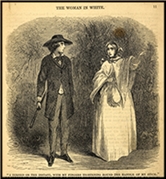
WILKIE COLLINS – The Woman in White. Low, UK, hardcover, 1860. Harper, US, hardcover, 1860. First published in serial form in 1859–60, appearing in Charles Dickens’ magazine All the Year Round (UK) and Harper’s Weekly (USA)
THE WOMAN IN WHITE. Warner Brothers, 1948. Alexis Smith, Eleanor Parker, Sydney Greenstreet, Gig Young, Agnes Moorehead, John Abbott and John Emery. Screenplay by Stephen Morehouse Avery, from the novel by Wilkie Collins. Directed by Peter Godfrey.
The ending is a bit cumbersome, but Wilkie Collins’ novel is a genuine Victorian masterpiece of plot and counter-plot, with lively characterizations throughout and a plot that defies synopsis.
Briefly, the tale unspun in Woman in White involves Laura Farlie, a lovely young heiress, her almost-as-lovely and much-smarter companion, Marian Halcombe, and a mysterious young woman who resembles Laura, wandering about dressed in white — hence the title of the piece.
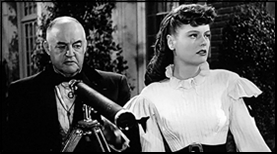
All three ladies become enamored to one degree or another with art teacher Walter Hartright, but all three become the intended prey of the insidious Count Fosco and the ruthless Sir Percival Glyde.
What follows is a panoply of melodrama, with false heirs and heiresses, secret agreements, lingering illness, the odd murder and involuntary impersonation, secret societies, death by fire….
The wonder of it is that under Collins’ skillful pen it all reads much better than it sounds. The smooth prose and Dickensian characters kept me enthralled with this long after my willing suspension of disbelief had crashed to the floor.
I should also add that among the characters, Count Fosco comes off the most compellingly. Rotund, loquacious, charming and venomous, he almost seems as if, writing in 1859, Collins foresaw the coming of Sydney Greenstreet and wrote the part just for him.
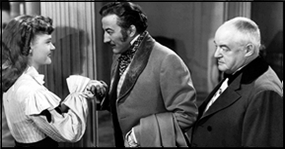
Small wonder then that Greenstreet appeared as Count Fosco in the Warners film of 1948. Indeed, he is the linchpin of a sumptuous production with an excellent cast, despite the truncations of plot, and the unfortunate miscasting of Gig Young as the lead (A capable actor, but try to picture Bogart in Pride and Prejudice to get my drift.) the film is splendidly faithful to the tone and feel of Collins’ classic. Agnes Moorhead, John Abbott and John Emory sparkle in supporting roles, and Sydney Greenstreet was born to play the porcine, mellifluous Count Fosco. The fast resolution is a definite improvement on the book.
But I found myself most intrigued by the happy ending, which (WARNING!) finds our hero and heroines vaguely landing in some sort of merry menage-a-trois. Oddly apt in view of Colins’ feelings about marriage (He spent his later years in the company of two ladies.) but surprising in a Hollywood film of its time.
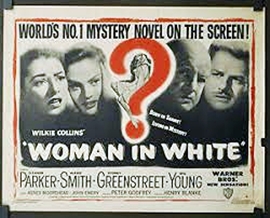
Thu 18 Feb 2021
Did I tell you I am planning on starting up a chewing gum recycling factory? I just need a little help to get it off the ground.